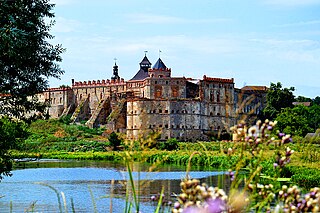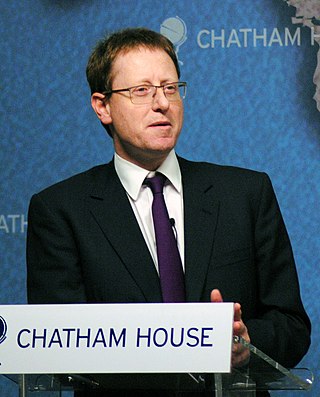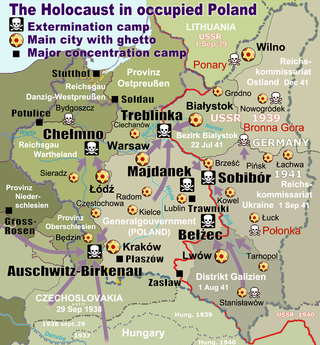Christianity began as a movement within Second Temple Judaism, but the two religions gradually diverged over the first few centuries of the Christian era. Today, differences of opinion vary between denominations in both religions, but the most important distinction is Christian acceptance and Jewish non-acceptance of Jesus as the Messiah prophesied in the Hebrew Bible and Jewish tradition. Early Christianity distinguished itself by determining that observance of halakha was not necessary for non-Jewish converts to Christianity. Another major difference is the two religions' conceptions of God. Depending on the denomination followed, the Christian God is either believed to consist of three persons of one essence, with the doctrine of the incarnation of the Son in Jesus being of special importance, or like Judaism, believes in and emphasizes the Oneness of God. Judaism, however, rejects the Christian concept of God in human form. While Christianity recognizes the Hebrew Bible as part of its scriptural canon, Judaism does not recognize the Christian New Testament.

Hasidism or Hasidic Judaism is a religious movement within Judaism that arose in the 18th century as a spiritual revival movement in contemporary Western Ukraine before spreading rapidly throughout Eastern Europe. Today, most of those affiliated with the movement, known as hassidim, reside in Israel and in the United States.

Judaism is an Abrahamic monotheistic ethnic religion that comprises the collective spiritual, cultural, and legal traditions of the Jewish people. Judaism evolved from Yahwism, an ancient Semitic religion of the late Bronze Age to early Iron Age, likely around the 6th/5th century BCE. Along with Samaritanism, to which it is closely related, Judaism is one of the two oldest Abrahamic religions.

Haredi Judaism is a branch of Orthodox Judaism that is characterized by its strict interpretation of religious sources and its accepted halakha and traditions, in opposition to more accommodating values and practices. Its members are usually referred to as ultra-Orthodox in English; a term considered pejorative by many of its adherents, who prefer the terms strictly Orthodox or Haredi. Haredim regard themselves as the most authentic custodians of Jewish religious law and tradition which, in their opinion, is binding and unchangeable. They consider all other expressions of Judaism, including Modern Orthodoxy, as deviations from God's laws, although other movements of Judaism would disagree.
The Tzadikim Nistarim or Lamed Vav Tzadikim, often abbreviated to Lamed Vav(niks),[a] refers to 36 righteous people, a notion rooted within the mystical dimensions of Judaism. The singular form is Tzadik Nistar.

A Rebbe or Admor is the spiritual leader in the Hasidic movement, and the personalities of its dynasties. The titles of Rebbe and Admor, which used to be a general honor title even before the beginning of the movement, became, over time, almost exclusively identified with its Tzadikim.
Religious pluralism is a set of religious world views that hold that one's religion is not the sole and exclusive source of truth, and thus recognizes that some level of truth and value exists in other religions. As such, religious pluralism goes beyond religious tolerance, which is the condition of peaceful existence between adherents of different religions or religious denominations.

The Messiah in Judaism is a savior and liberator figure in Jewish eschatology who is believed to be the future redeemer of the Jews. The concept of messianism originated in Judaism, and in the Hebrew Bible a messiah is a king or High Priest of Israel traditionally anointed with holy anointing oil.
Neo-Hasidism, Neochassidut, or Neo-Chassidus, is an approach to Judaism in which people learn beliefs and practices of Hasidic Judaism, and incorporate it into their own lives or prayer communities, yet without formally joining a Hasidic group. Over the 20th century neo-Hasidism was popularized by the works of writers such as Hillel Zeitlin, Martin Buber, Abraham Joshua Heschel, Lawrence Kushner, Zalman Schachter-Shalomi, and Arthur Green.

Tzadik is a title in Judaism given to people considered righteous, such as biblical figures and later spiritual masters. The root of the word ṣadiq, is ṣ-d-q, which means "justice" or "righteousness". When applied to a righteous woman, the term is inflected as tzadeket/tzidkaniot.

Medzhybizh, formerly Mezhybozhe, is a rural settlement in Khmelnytskyi Oblast, western Ukraine. It is located in Khmelnytskyi Raion, 25 kilometres from Khmelnytskyi on the main highway between Khmelnytskyi and Vinnytsia at the confluence of the Southern Buh and Buzhok rivers. Medzhybizh was once a prominent town in the former Podolia Province. Its name is derived from "mezhbuzhye", which means "between the Buzhenka Rivers". It is known as the birthplace of the Jewish Hasidic mystical religious movement. Medzhybizh hosts the administration of Medzhybizh settlement hromada, one of the hromadas of Ukraine. Current population: 1,237 ; 1,731,.

Jonathan Saul Freedland is a British journalist who writes a weekly column for The Guardian and used to write for the Jewish Chronicle until, along with Hadley Freeman, David Aaronovitch, David Baddiel and others, he resigned dramatically in September 2024.Freedman also presents BBC Radio 4's contemporary history series The Long View. Freedland also writes thrillers, mainly under the pseudonym Sam Bourne, and has written a play, Jews. In Their Own Words, performed in 2022 at the Royal Court Theatre, London.

Jewish-American organized crime initially emerged within the American Jewish community during the late 19th and early 20th centuries. In media and popular culture, it has variously been referred to as the Jewish Mob, the Jewish Mafia, the Kosher Mob, the Kosher Mafia, the Yiddish Connection, and Kosher Nostra or Undzer Shtik. The last two of these terms are direct references to the Italian Cosa Nostra; the former is a play on the word for kosher, referring to Jewish dietary laws, while the latter is a calque of the Italian phrase 'cosa nostra' into Yiddish, which was at the time the predominant language of the Jewish diaspora in the United States.
Hasidic philosophy or Hasidism, alternatively transliterated as Hasidut or Chassidus, consists of the teachings of the Hasidic movement, which are the teachings of the Hasidic rebbes, often in the form of commentary on the Torah and Kabbalah. Hasidism deals with a range of spiritual concepts such as God, the soul, and the Torah, dealing with esoteric matters but often making them understandable, applicable and finding practical expressions.
Orthodox Jewish outreach, often referred to as Kiruv or Qiruv, is the collective work or movement of Orthodox Judaism that reaches out to non-observant Jews to encourage belief in God and life according to Jewish law. The process of a Jew becoming more observant of Orthodox Judaism is called teshuva making the "returnee" a baal teshuva. Orthodox Jewish outreach has worked to enhance the rise of the baal teshuva movement.
Martyrdom in Judaism is one of the main examples of Jews doing a kiddush Hashem, a Hebrew term which means "sanctification of the Name". An example of this is public self-sacrifice in accordance with Jewish practice and identity, with the possibility of being killed for no other reason than being Jewish. There are specific conditions in Jewish law that deal with the details of self-sacrifice, be it willing or unwilling.
Judaism's doctrines and texts have sometimes been associated with violence or anti-violence. Laws requiring the eradication of evil, sometimes using violent means, exist in the Jewish tradition. However, Judaism also contains peaceful texts and doctrines. There is often a juxtaposition of Judaic law and theology to violence and nonviolence by groups and individuals. Attitudes and laws towards both peace and violence exist within the Jewish tradition. Throughout history, Judaism's religious texts or precepts have been used to promote as well as oppose violence.

The Słonim Ghetto was a Nazi ghetto established in 1941 by the SS in Slonim, Western Belarus during World War II. Prior to 1939, the town (Słonim) was part of the Second Polish Republic. The town was captured in late June 1941 by the Wehrmacht in the early stages of Operation Barbarossa. Anti-Jewish measures were promptly put into place, and a barb-wire surrounded ghetto had been created by 12 July. The killings of Jews by mobile extermination squads began almost immediately. Mass killings took place in July and November. The survivors were used as slave labor. After each killing, significant looting by the Nazis occurred. A Judenrat was established to pay a large ransom; after paying out 2 million roubles of gold, its members were then executed. In March 1942, ghettos in the surrounding areas were merged into the Słonim ghetto.
Anabaptists and Jews have had interactions for several centuries, since the origins of Anabaptism in the Radical Reformation in early modern Europe. Due to the insularity of many Anabaptist and Jewish communities, Anabaptist–Jewish relations have historically been limited but there are notable examples of interactions between Anabaptists and Jews. Due to some similarities in dress, culture, and language, Amish and Mennonite communities in particular have often been compared and contrasted to Haredi and Hasidic Jewish communities.
Lynn Rita Davidman is an American sociologist. She is the distinguished professor of modern Jewish studies and professor of sociology at the University of Kansas.









